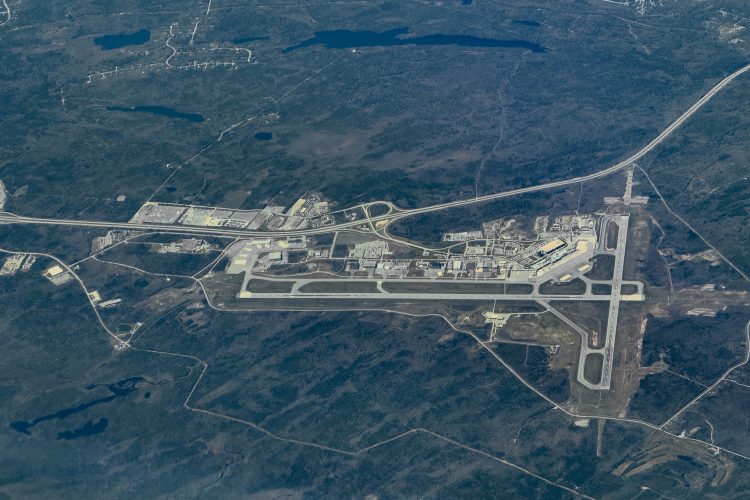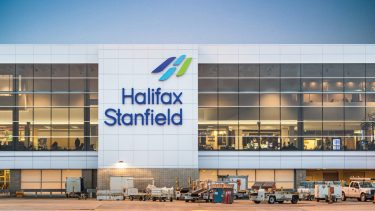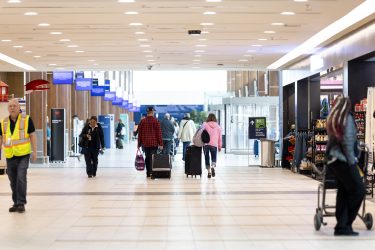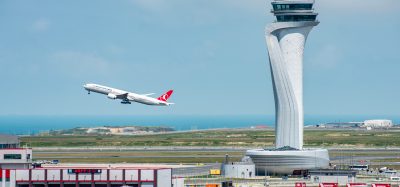Increasing air routes to Halifax, Canada
- Like
- Digg
- Del
- Tumblr
- VKontakte
- Buffer
- Love This
- Odnoklassniki
- Meneame
- Blogger
- Amazon
- Yahoo Mail
- Gmail
- AOL
- Newsvine
- HackerNews
- Evernote
- MySpace
- Mail.ru
- Viadeo
- Line
- Comments
- Yummly
- SMS
- Viber
- Telegram
- Subscribe
- Skype
- Facebook Messenger
- Kakao
- LiveJournal
- Yammer
- Edgar
- Fintel
- Mix
- Instapaper
- Copy Link
Posted: 22 July 2024 | Christopher de Man | No comments yet
International Airport Review spoke to Christopher de Man, Director, Air Service, at Halifax International Airport Authority, at Routes Americas 2024, to discover what 2024 holds in store for the airport.


Halifax International Airport closed 2023 with a passenger traffic figure of over 3.5 million. What does this figure reflect of airport activity for 2023 and how does it compare to preceding years as well?
This activity is a testament of the travel demand that we’ve seen in our region in the post-COVID-19 recovery, and the unwavering demand of travellers wanting to come to our region, as well as travellers from our region wanting to explore the global world and the global community. It marks an impressive 15% growth year-on-year versus 2022. Our airline partners are excited to continue to grow in our market and we’re excited to grow with our airline partners.
What is in store for Halifax Airport in 2024?
2024 is going to be an exciting year as we welcome a lot of new capacity into our market. New carriers are coming back in and old routes re-opening that we haven’t seen since the onset of the pandemic. With the resumption of Icelandair connecting Halifax and Reykjavik and beyond Icelandair’s network, we’re very excited to welcome Icelandair back. Growth on existing partners to mainland Europe such as Condor and Discover Airlines adding capacity and Condor upgrading their aircraft to the new A330neos.
WestJet is relaunching their transatlantic services this summer where we’ll have three routes served, Edinburgh, Dublin and London Gatwick. We’re very excited to have that return. But also, we’re seeing growth from our existing airline partners who are adding capacity to domestic markets, transborder markets, and new connections to markets such as LaGuardia with our partners, American and Delta.
What do these figures represent more broadly for traffic across the U.S. airports, would you say?
For 2023, we saw about 200,000 passengers from the Halifax market to transborder markets. That represented an impressive 149% growth year-on-year versus 2022. In 2024, we’re anticipating that growth to increase even more, and we’ll be back to pre-pandemic levels in terms of U.S. passengers and capacity in our markets. We’re very excited to welcome that capacity back. And these routes are connecting not only to the key destinations that travellers want to travel to, but also to destinations beyond our airline partners networks.
Could you tell us a bit about your route development strategy and what goes into making route development successful?
A very interesting question. When we’re working with our airline partners and we’re identifying new route opportunities, we’re working with community stakeholders, airlines, and we carry out market analysis to understand where people want to go, where people coming to our region are coming from, and why, to understand what that full value proposition is. We’re working with our airline partners to identify the emerging trends and the emerging opportunities, but we’re also using different data sets and different data analysis and tools than we used prior to the pandemic.
We also recognise the importance of understanding the network strategy for airline partners. What might work for one airline might not work for another. So, we are also working with our airlines to understand what their network strategy is, what their fleet plans are, what their fleet availability is, what can and can’t they do? And really, how do we fit into their global network and their global network structure?


What would you say is the economic impact of these new routes on local economies in the catchment areas?
Every new route that comes in has a significant impact on our local economy. In 2022, Halifax Stanfield’s contribution to the local economy was worth $3.4 billion to our region. So, as we bring in new airlines, new routes, it only further expands that through inbound tourism, through inbound economic trade, and facilitating the ability for the air bridge capacity or bridge connectivity for passengers going between the different markets.
These new routes help support the over 100 organisations on our campus and roughly 5,000 daily workers that work throughout our campus airport through facilitating job opportunities and job growth.
What are your airline partners noting about demand and capacity?
Our airline partners are seeing very strong demand in our market, and that demand is being acknowledged through added capacity and working in partnership with these airlines. We’re seeing great opportunity in terms of growth and our airline partners see it. We work closely with our airlines to identify that. But we also work closely with the community stakeholders to identify the year capacity that’s coming into the market, and identify how can we help support the market growth that we’re seeing. For instance, for 2024, we’re going to see up to six times daily service in the summer between Halifax and New York City. Whereas last year we only had one times daily. So, they’re seeing the strong performance on a market such as Halifax, New York, and we’re excited for all this extra capacity coming up.


Halifax International Airport achieved level three of the Airport Carbon Accreditation. What did the airport do to achieve this accreditation?
Working on different sustainability initiatives, we concentrated our focus on different projects. On one of our particular runways, Runway 14, we extended the taxiway to allow the aircraft to taxi all the way directly to the end of the runway versus backtracking on a taxiway. This initiative was in partnership with Transport Canada and funding with Transport Canada’s Airport Critical Infrastructure programme at the tune of CA$14.7 million, as we collaborated with our federal government.
We also installed electric charging stations, not only for passengers in the parking garage, but we also installed it on the secure side for the ground handlers to charge their EV vehicles to handle the aircraft. We’ve also replaced the conventional lighting systems on one of our runways to be energy efficient LED lights. These are projects that we’ve been working on for the last few years, and it’s all part of our goal to support carbon-neutrality by 2050 for the industry.
Does sustainability also play a feature in your route development discussions with airlines? And if so, how?
Absolutely. We prioritise collaborating with our airline partners as we share our commitment for sustainability. Part of this is also identifying more efficient routings for passengers. In some instances, historic flows or routing options for passengers is to backtrack one to two to three hours before they overfly the same region. So, we’ve been working with airline partners to identify those markets where a non-stop could exist, therefore improving the overall mileage that the passenger flies and decreasing the total fly time.
We also work with the airline’s needs, identifying how we can support them, and how to reduce their carbon emissions. The EV project is an example of just that. We also integrate this into our route development conversations with the carriers to identify if a particular aircraft type is more optimal versus another aircraft type in our market to support route to capacity growth and development.
https://halifaxstanfield.ca/airport-authority/who-we-are/
Related topics
Capacity, Passenger experience and seamless travel, Passenger volumes, Route development, Sustainability


















